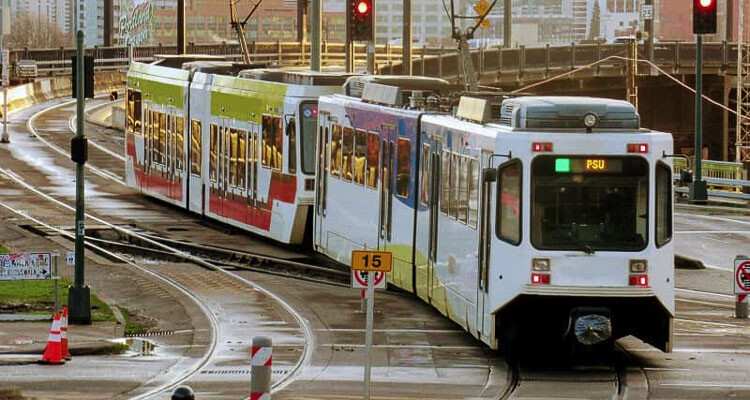
TriMet has continued to push for expansion of the Yellow Line, with plans to extend the line into Washington state across the proposed new I-5 bridge
Taylor Marks
Cascade Policy Institute
Over-promised and under-delivered.
Throughout its 18-year life, TriMet’s Yellow Line MAX has never met its promised ridership projections.
In fact, just before the pandemic hit, Yellow Line ridership was more than 25 percent lower than where it was projected to be for 2020. Following the COVID-19 drop-off in ridership, TriMet now doesn’t expect transit ridership to hit pre-pandemic levels until sometime after 2045.
Because of low ridership, TriMet is failing to abide by its commitments to service frequency. TriMet promised the Federal Transit Administration that Yellow Line trains would arrive every 10 minutes during peak hours and every 15 minutes off-peak. Instead, Yellow Line trains run every 15 minutes during peak periods and every 30 minutes during other parts of the day.
Despite this consistent underperformance, TriMet has continued to push for expansion of the Yellow Line, with plans to extend the line into Washington state across the proposed new I-5 bridge.
Is slow, low-ridership light rail really the best usage of lane space on the proposed I-5 bridge? Or, should the new bridge instead expand lane capacity for trucks and cars usage to reduce congestion on the region’s freeways?
Taylor Marks is a Research Associate at Cascade Policy Institute, Oregon’s free market public policy research organization.
Also read:
- Busy pavement season ahead on Vancouver streetsThe city of Vancouver is set to repave and preserve 76 lane miles across 20 neighborhoods in summer 2025, with ADA upgrades and community notices throughout.
- State representative: Expect sticker shock when Interstate Bridge project officials reveal price, tolling plansAt a town hall in Battle Ground, Rep. John Ley warned of major cost increases and tolling burdens tied to the Interstate Bridge replacement project.
- Opinion: Washington state lawmakers increase the cost of driving – againBob Pishue of Mountain States Policy Center argues that new vehicle and fuel taxes in Washington will raise driving costs while diverting funds away from roads.
- Overnight full closure of I-5 near Woodland for bridge inspection, May 6WSDOT will fully close southbound I-5 near Woodland overnight on Tuesday, May 6 for a bridge inspection using a chain drag test.
- Opinion: Do we still need TriMet?John A. Charles Jr. of the Cascade Policy Institute argues that TriMet should halt expansion plans and prepare for major service reductions in response to falling ridership and rising costs.










This CCToday article, IBR adds new transit options for consideration to new bridge over Columbia River includes explains,
” Recent traffic analysis by the Interstate Bridge Replacement team indicates the majority of trips across the Columbia River on the Interstate Bridge are general purpose vehicles. Freight haulers make up about the second largest group of vehicles. Transit carries under 2 percent of trips across the river. ”
Lane capacity for trucks including freight, and cars, to reduce congestion and deliver goods and services will best serve the most businesses and residents. Public transit buses and vans that use roads are more flexible in route and vehicle size, and far more economical than gold plated light rail.